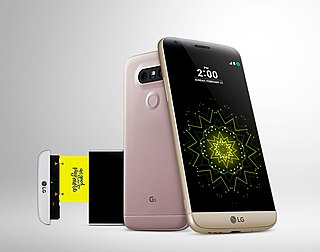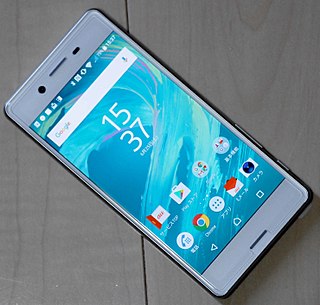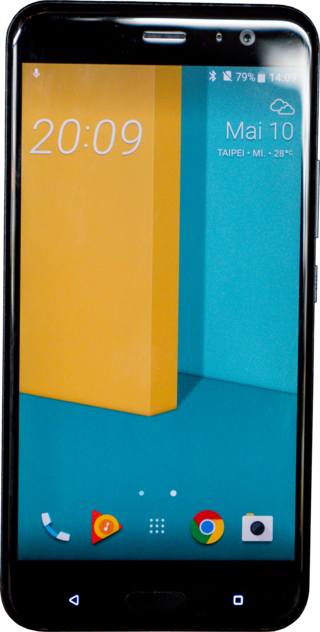Phones
1st generation (2016 lineup)
| 2016 | LG K10 |
|---|---|
| LG K7 | |
| LG K4 | |
| LG K8 | |
| LG K5 | |
| LG K3 | |
| LG K20 plus |
The first generation of the LG K series includes the first phones, LG K10, LG K7 and LG K4. They are launched in January 2016 and they are followed by LG K8, which was launched in February 2016, and later in March 2016, LG has launched the LG K5, and was followed by LG K3, which was launched in August 2016. The latest phone in 2016 of the LG K series was the LG K20 plus, which has a 16 or 32 GB of internal storage, 2 GB of RAM, Qualcomm Snapdragon 425 processor, and it is only available in Black color.
LG K10
LG K10 was the first phone, launched in January 2016 as the K series phone, along with LG K7. It has a 5.3-inch screen, powered by a Qualcomm Snapdragon 410 chipset processor, 13-megapixels camera and a 2300 mAh battery.
LG K7
LG K7 was the second phone, launched in January 2016 as the K series phone, along with LG K10. It comes with a 5-inch screen, 5-megapixels main and front cameras and a 2125 mAh battery.
LG K4
LG K4 was the third phone, launched in January 2016 as the K series phone. It has a 4.5-inch screen, a sleek design and a 2-megapixels front camera. It launched along with LG K7 and LG K10 in the same month.
LG K8
LG K8 is a successor to LG K7 and it is similar to the previous model. It was launched in February 2016, and has a different processor, an 8-megapixel rear camera and included autofocus.
LG K5
LG K5 is a successor to LG K4 and it is similar to the previous model. It is launched in March 2016, and only it has a 5-inch screen, quad-core CPU and a 5-megapixel camera.
LG K3
LG K3 is a predecessor to LG K4. It is launched in August 2016 and it is slightly weaker than the previous model, a VGA front camera and a downgraded CPU.
LG K20 plus
LG K20 plus (aka. LG K20+, LG K20 (2016)), is a successor to LG K10 and released in December 2016. It has a 2700 mAh battery, upgraded processor and a higher storage and RAM.
Comparison
| Model | Release Date | Display | Chipset | Memory | Rear Camera | Front Camera | OS | Battery | |
|---|---|---|---|---|---|---|---|---|---|
| ROM | RAM | ||||||||
| K3 | August 2016 | 4.5" IPS LCD (480 x 854 px) | Mediatek MT6737M - K100 Qualcomm MSM8909 Snapdragon 210 (28 nm) - LS450 | 8 GB (eMMC 4.5) with microSDHC slot | 1 GB | 5 MP (720p@30fps) | VGA | Android 6.0 "Marshmallow" | 1940 mAh |
| K4 | January 2016 | Mediatek MT6735M - K120E, K130E Qualcomm MSM8909 Snapdragon 210 (28 nm) - K121 | 5 MP (720p@30fps) with AF | 2 MP | Android 5.1.1 "Lollipop" | ||||
| K5 | March 2016 | 5.0" IPS LCD (480 x 854 px) | Mediatek MT6582 (28 nm) | 5 MP (1080p@30fps) with AF | 1900 mAh | ||||
| K7 | January 2016 | 5.0" IPS LCD (480 x 854 px) | Mediatek MT6580M (3G model) Qualcomm MSM8909 Snapdragon 210 (28 nm) (LTE model) | 8 or 16 (LTE model only) GB with microSDHC slot | 1 (3G model only) or 1.5 GB | 5 MP (3G model) or 8 MP (LTE model) (720p@30fps) with AF | 5 MP | Android 5.1 "Lollipop" | 2125 mAh |
| K8 | February 2016 | 5.0" IPS LCD (720 x 1280 px) | Mediatek MT6735 (28 nm) | 8 or 16 GB with microSDHC slot | 1.5 GB | 8 MP (1080p@30fps) with AF | 5 MP (720p@30fps) | Android 6.0 "Marshmallow", upgradable to Android 7.0 "Nougat" | |
| K10 | January 2016 | 5.3" IPS LCD (720 x 1280 px) | Qualcomm MSM8916 Snapdragon 410 (28 nm) - 3G model Mediatek MT6753 - LTE model | 16 GB (eMMC 4.5) with microSDHC slot | 1, 1.5 or 2 GB | 8 MP (3G model) or 13 MP (LTE model) (1080p@30fps) with AF | 5 MP or 8 MP (1080p@30fps) | Android 5.1.1 "Lollipop" or Android 6.0 "Marshmallow" | 2300 mAh |
| K20+ | December 2016 | Qualcomm MSM8917 Snapdragon 425 (28 nm) | 16 or 32 GB (eMMC 5.1) with microSDXC slot | 2 GB | 13 MP (1080p@30fps) with AF | 5 MP (1080p@30fps) | Android 7.0 "Nougat" | 2700 mAh | |
2017 lineup
2018 lineup

2019 lineup

2020 lineup

















